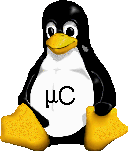Sunday, January 18, 2009
What I am reading recently
Perl:
Practical Text Mining with Perl by Roger Bilisoly

Pro Perl Parsing by Christopher M. Frenz

Linux:
Beginning Linux Programming by Neil Matthew, Richard Stones

JaveScript:
DOM Scripting: Web Design with JavaScript and the Document Object Model by Jeremy Keith, Dave Shea

C/CPP:
Cross-Platform Development in C Plus PlusBuilding Mac OS X, Linux, and Windows Applications Syd Logan

Labels: Reading
Saturday, January 17, 2009
"Organization" for Zizhu Perl Users -- Zizhu Perl User Group

The motivation of founding a user group for Perl users in Zizhu site has been in my mind for at least half year when I was reading the excellent Perl book "Minimal Perl: For UNIX and Linux People -- by Tom Maher". It is a very nice book that describing those knowledges never told by other Perl textbooks, you will feel refreshed after you start reading it.

So with great self-encouragement, I have sent out the emails to those person I knew that potentially used or using Perl, I hope I can get some positive feedback on founding the Zizhu Perl User Group.
Some basic functions will be included in the User Group:
1. Perl book/experience sharing --> link to some good Perl website and e-resources.
2. Perl problem discussion --> just like a BBS page for problem discussion
3. Perl module/script development --> some open interesting project that could help to improve
3. Perl skill/tips presentation (in-romm or on-line) --> invite Perl expert to give presentations to group members
4. Collaboration with Internal/External Perl User Groups… --> set up some remote relationship with internal or external Perl user group, for example Seattle Perl User Group (SPUG).
That will be interesting if some *Core* person can contribute in the event, and I hope every person in this group can enjoy Perl Programming and some extended content, for example, VIM and UNIX/Linux programming; yes, Perl is just like a door to another wonderful world -- UNIX/Linux.
Thanks
James
Labels: Perl Programming
Sunday, October 26, 2008
Propose some basic requirements and target to the Wheel Robot
here, let me propose some basic requirement for the Robot before the organic glass made "Body Frame" cutting.
Requirenment:
1. Debug port + status indication (including HW/SW Error indication, battery status indication, optional encoder data display and function key for different data display on the same LCD or 7bit LED)
2. PC-Robot program download utility. New application can be updated from PC through the cable very quickly.
3. two wheel self balancing
4. obstacle detection and escaping, because no Gyroscope available at a good price. Leverage te obstacle detection and escaping algorithm.
5. wheels are able to change from one case to another case
Excellent:
1. Robot could record the wheel speed, battery current/voltage and location information in the FLASH. PC host can process these data and draw the corresponding curves.
2. the wheel diameter is one of the parameter, if the Robot can balance once the diameter of the wheel is fixed.
3. ...
4. Robot control...
Target:
Saturday, October 18, 2008
Wheel Robot Project Going On
Purchased some tools and materials from Taobao.com at very good price.
They are:
Thursday, October 09, 2008
Reading "Inside SPICE" from Ron M Kielkowski
It is a classic handbook to explain the working methanism of SPICE engines, for example, HSPICE, RSPICE, IS-spice, PSPICE, they are almost based on the same one SPICE2.
Keep some notes about what I have captured from this book.
Some key words:
1. HSPICE Pole-zero analysis automatic optimization
2. nonlinear solution algorithm
3. Kirchhoff's voltage and current laws
4. Newton-Raphson algorithm
5. transcendental equationtranscendental equations are often solved with an iterative guessing technique.
6. Non-linear deviceinitial guess
In SPICE, the AC frequency sweep is defined as a small-signal linear analysis. This means that during the AC frequency sweep, distortion, clipping, saturation, and other nonlinear effects are ignored after the bias point has been established.
7. General Newton-Raphson Convergence Aids parameters
8. voltage convergence and current convergence
Subscribe to Posts [Atom]




